Active distribution systems and distributed energy resources
By Christine Schwaegerl, Chair, & Geza Joos, Secretary
Background and Scope of SC C6 Activities
Electric power systems are rapidly evolving in part due to increased penetration of distributed energy resources (DER) deployed in distribution systems. DER include generation from renewable energy resources (solar and wind), in addition to conventional distributed generation, electric energy storage systems, mostly connected at the distribution level, and demand response, in the form of integration and management of demand at the distribution level. The growing addition of generation at the distribution level may gradually displace central power generation and require new approaches to managing not only distribution but also transmission systems.
This evolution of electricity grids is also driven by new technologies, including the digitalisation of grid control and management, which brings significant benefits and disrupt conventional approaches, by societal and environmental concerns and pressures, namely decarbonisation and energy sustainability, including the move away from fossil fuel use. In addition, there is a trend towards deregulation of the electricity markets, and requirements for increased resilience and reliability of the energy supply. DER will play a key role in the evolution of power grids, by contributing to the decarbonisation and sustainability agenda, providing flexibility resources to ensure the reliability and resilience of power grids, and by allowing end users to play an increasing role in the operation of the electric gird and participate in electricity markets. Finally, DER deployment can be an approach that will facilitate rural and remote community electrification.
Distributed energy resources and active distribution systems can therefore contribute to key elements of the CIGRE technical directions, which include (a) innovative solutions for DER and distribution technology deployment; (b) new approaches to configure, plan and operate new distribution systems for enhanced reliability and resilience; (c) rural electrification, islanded power systems and individual customer off-grid systems and solutions.
Distributed energy resources, which include technologies mentioned above, are displayed in Figure 1. These assets and resources are the key drivers for deploying active distribution systems. They are increasingly included in the planning and operation of distribution systems. They make distribution grids more controllable and responsive, enhance the role of the Distribution System Operator (DSO) and enable consumer participation in electricity markets. DER, as it displaces part of the central generation, has an increasing impact on central power generation dispatch and impact the operation of transmission systems.
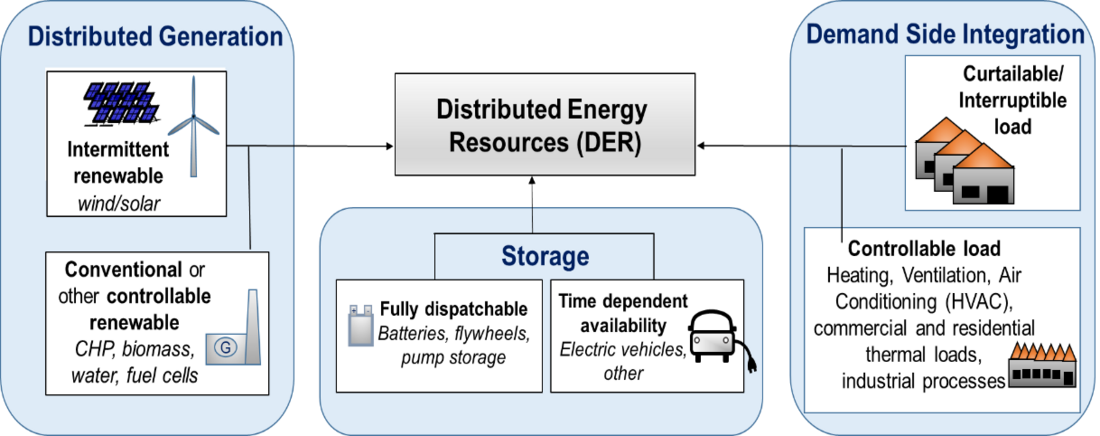
Figure 1 – Distributed Energy Resources (DER) – key enabler
Distributed generation, an element in the DER assets, includes generation from renewable energy resources, mostly solar and wind power. These resources are variable and intermittent and need to be balanced to provide dispatchable power. This can be achieved using electricity storage (batteries) and demand response. In addition, distributed generation assets, individually, usually provide small amounts of power. Aggregation of DER is an effective way of managing a large number of DER, including smaller solar panels and battery energy storage systems at the residential and commercial levels. This can be achieved using concepts and tools such as microgrids, virtual power plants (VPP), Figure 2, or software platforms such as distribution management systems (DERMS) that aggregate DER over a wider area.
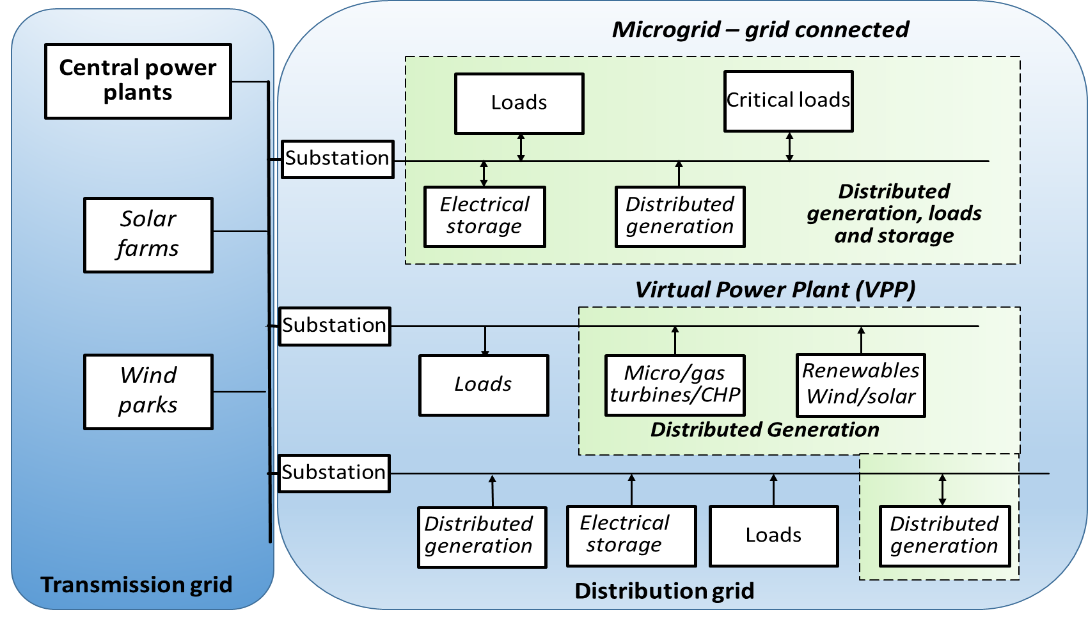
Figure 2 – DER deployment and aggregation – active distribution systems
SC C6 Mission and Scope
The activities of SC C6 are mainly concerned with the technology, deployment of distributed energy resources (DER) and the impact on distribution grids. DER include assets shown in Figure 1.
The activities of the SC C6 Working Groups are structured along the lines and using building blocks shown in Figure 3:
- (a) Drivers for DER deployment and integration in distribution systems (areas of attention) – Approaches and solutions to assist different stakeholders involved in distribution systems to make DER more controllable and responsive and support distribution system operations. These approaches include customer integration and empowerment: active distribution network management (ADMS), microgrids, virtual power plants (VPP), DER management systems (DERMS) and aggregation platforms, DER monitoring and control; rural electrification and off‐grid systems.
- (b) Enabling DER technologies (pillars) – Distributed generation including conventional (diesel, gas turbines, CHP), renewable resources (wind and solar) based generation, energy storage systems (battery energy storage, thermal and inertial storage), and demand response (controllable and curtailable loads); innovative equipment and systems for DER technology deployment (inverter interfaces).
- (c) Innovative solutions for DER and distribution system technologies and deployment (applications of current interest) – Some of the areas of interest covered in the scope of the past and current Working Groups are listed and detailed in the section on Current Technical Activities.
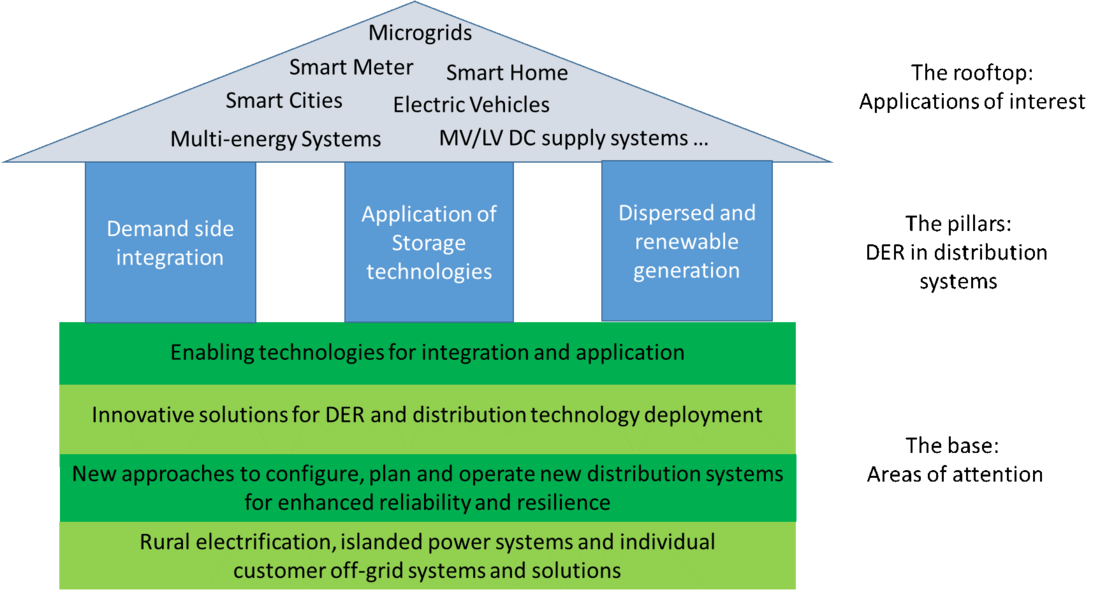
Figure 3 – Elements and building blocks of SC C6 technical activities
Structure and Membership
The SC is composed of 24 regular members, 2 additional members, 19 observer members, and a Chair and Secretary. Represented are 43 countries.
The membership includes stakeholders that have an interest in the topics covered by the Study Committee work: distribution planning and operations engineers and system operators, power system planning consultants, technology providers and manufacturers, applied information and communication technology experts, and researchers from academia and government laboratories.
Most of the Study Committee activities are carried out in Working Groups (WG). These produce technical brochures that answer the questions posed in the approved terms of reference (ToR) of the Working Groups, prepare tutorials based on the published brochures, that are offered at CIGRE symposia and sessions, and write summary articles on these brochures that appear in the CIGRE Electra publication.
The Study Committee also collaborates through joint Working Groups (JWG) with other Study Committees, including SC B4 – HVDC and Power Electronics, SC C1 – System Development and Economics, SC C2 – System Operation and Control, SC C4 – System Technical Performance, SC C5 – Electricity Markets and Regulation, and SC D2 – Information systems and telecommunication.
Advisory groups (AG) include: (a) AG C6.01 – Strategy; (b) AG C6.02 – Quality check of brochures; (c) AG C6.12 – Tutorials; (d) AG C6.17 – Rural Electrification, which coordinates CIGRE initiatives in this area; (e) Communication.
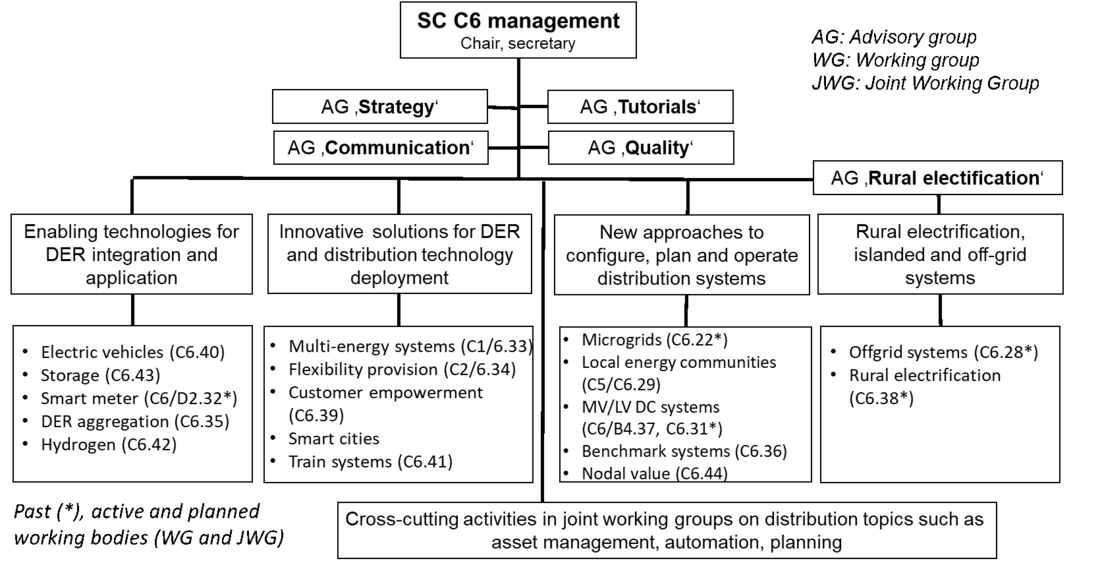
Figure 4 – Structure of SC C6 and technical activities
Current Technical Activities of SC C6 Working Groups
Current technical activities are addressed in the active Working Groups listed in Table 1. These cover the elements that structure of SC C6 technical activities structured in Figure 4, namely, and with reference to Figure 3 and the list in the Table 1, the following:
- (a) Drivers for DER deployment and integration in distribution systems (areas of attention) – covered in WG C6.38 (rural electrification), JWG C6/C2.34 (DER flexibility provision), JWG C1/C6.37/CIRED (investment decision under uncertainty), JWG C1/C6.42 (planning for high levels of DER), WG C6.36 (DER models for impact studies), WG C6.43 (Aggregation of battery energy storage and distributed energy resources (DER), including solar PV).
- (b) Enabling DER technologies (pillars for DER) – covered in JWG C6/C1.33 (multi-energy systems, as generation), WG C6.40 (electric vehicles as DER, as storage), JWG D2/C6.47 (Advanced consumer side energy resource management systems), WG C6.39 (customer empowerment, as demand response).
- (c) Innovative solutions for DER and distribution system technologies and deployment (applications) – covered in JWG C6/C1.33 (multi-energy systems), JWG C5/C6.29 (local energy communities participating in markets), WG C6.39 (customer empowerment), WG C6.35 (DER aggregation platforms), JWG C6/B4.37 (medium voltage dc distribution systems), WG C6.41 (Technologies for Electrical Railway Distribution Supply Systems), WG C6.42 (Electric Transportation Energy Supply Systems), WG C6.44 (Nodal Value of Distributed Renewable Energy Generation).
WG | Title of the Working Group | Approval | Convenor |
|---|---|---|---|
JWG C6/C1.33 | Multi-energy system interactions in distribution grids | 2018 | B. Bak-Jensen (Denmark) |
JWG C6/C2.34 | Flexibility provision from distributed energy resources | 2018 | P. Mancarella (Australia) |
WG C6.35 | DER aggregation platforms for the provision of flexibility services | 2018 | A. Oudalov (Switzerland) |
WG C6.36 | Distributed Energy Resource Models for Impact Assessment | 2019 | J. Taylor (USA) |
JWG C6/B4.37 | Medium voltage dc distribution systems | 2018 | J. Yu (UK) |
WG C6.38 | Rural electrification | 2018 | K. Dedekind (South Africa) |
WG C6.39 | Distribution customer empowerment | 2018 | M. Ross (Canada) |
WG C6.40 | Electric Vehicles as Distributed Energy Resource (DER) systems | 2019 | J. P. Lopez (Portugal) |
WG C6.41 | Technologies for Electrical Railway Distribution Supply Systems | 2020 | E. Pilo (Spain) |
WG C6.42 | Electric Transportation Energy Supply Systems | 2020 | G. Joos (Canada) |
WG C6.43 | Aggregation of battery energy storage and distributed energy resources (DER), including solar PV | 2020 | N. Hatziargyriou (Greece) |
WG C6.44 | Nodal Value of Distributed Renewable Energy Generation | 2021 | K. Reiche (Germany) |
JWG C1/C6.37/CIRED | Optimal transmission and distribution investment decisions under increasing energy scenario uncertainty | 2018 | J.C. Araneda / |
JWG D2/C6.47 | Advanced consumer side energy resource management systems | 2018 | A. Nebera (Russia) |
JWG C1/C6.42 | Planning tools and methods for systems facing high levels of distributed energy resources | 2019 | C. Higgings (UK) |
JWG C5/C6.29 | New markets, local energy communities | 2019 | A. Toccoen (France) |
Scope of Active Working and Joint Working Groups
JWG C6/C1.33 – Multi-energy system interactions in distribution grids – The scope of this WG is to study the configurations, impacts and prospects of multi-energy systems that enable enhanced solutions for intelligent electricity systems, energy storage and demand side management in the electricity grids with an increasing share of distributed energy resources (DER). The JWG will explore opportunities and impacts of multi-energy systems in future electric power systems and review of technologies and systems that integrate multiple sources of energy such as (a) Power-to-Gas (P2G), including electrolyzers, fuels cells, hydrogen storage, injection into gas networks; (b) Combined Heat and Power (CHP); (c) Combined Cooling, Heat and Power (CCHP); (d) Power-to-Heat (P2H), including electric boilers, heat pumps, thermal storage; (e) Power-to-Vehicle (P2V) including vehicle to grid (V2G) services; (f) pumped and compressed air storages. It will explore building, district and city modelling and system modelling, planning, control and operation of electric distribution grids as part of multi-energy systems and networks. Business cases, experiences and case studies of active multi-energy systems as well as guidelines and existing practices, techno-economic challenges and solutions to adopt multi-energy systems will be provided.
JWG C6/C2.34 – Flexibility provision from distributed energy resources – The scope of the WG is to analyse, assess and promote the role and potential of distributed energy resources (DER) in providing ancillary services, particularly flexibility, and participating in balancing market and whole-system operation. It will review drivers and new requirements for flexibility at different stages of power system planning and operation at different levels of the power system, from the whole-system to the local network, with a focus on DER based on intermittent renewables and compile information on the potential of DER and multi-energy coupling to provide flexibility over different time scales, and in different forms, including generation (inverter interfaced), energy storage (batteries, thermal storage, e-vehicles, gas infrastructure), demand response (industrial installations, individual buildings or district energy systems), and flexible assets (transformer tap changers and voltage regulators, dynamic thermal rating) and operations (active power control of renewable energy, TSO-DSOs coordination). The WG analyses the contribution of DER to operational and planning flexibility in transmission and distribution networks in current and future power systems, taking into account market structures, in providing multiple services of their choice to TSOs or DSOs, facilitated by new actors (aggregators) and grid architectures (interconnections, microgrids, virtual power plants, and energy hubs interlinkage, among which Vehicle to Grid (V2G) and Power to Gas (P2G). It will identify and discuss experiences and case studies and explore new business cases for emerging technologies and new market models. Finally, it will provide recommendations and guidelines regarding commercial, regulatory and policy changes required to exploit the flexibility provided by DER.
WG C6.35 – DER aggregation platforms for the provision of flexibility services – The objectives of this WG are to collect and analyse information on technical, economic and regulatory aspects of DER aggregation and to analyse methods for integrating aggregated resources into network planning and operation. Economically attractive DER aggregation approaches, classified according to contracted customers and services offered, as well as aggregator interaction with other major stakeholders such as participation in ancillary services markets, including frequency regulation, capacity and energy markets, bilateral agreements with distribution network operators. Services covered include voltage support, congestion management, black start and restoration and services to end-users and customers, including backup power. The WG will review of aggregation technologies including DERMS (Distributed energy resource management system), VPP (virtual power plant), and microgrids, considering among others the role of ICT and forecasting, trading and scheduling optimization and analyse the technological improvements that will allow DER aggregation move to the next level of controllability and flexibility. Experiences, case studies, regulatory and business model trends will be analysed providing guidelines and existing practices, techno-economic challenges and solutions for the deployment of DER aggregation platforms.
WG C6.36 – Distributed Energy Resource Models for Impact Assessment – The continued proliferation of DER and the convergence of distribution operations with distribution planning require that the models (both planning and real time models for operations) for these DER and their control systems be aggregated to support requirements for TSO/DSO coordination. With these requirements for advanced distribution planning systems, there is a need to develop benchmark models for different types of distributed resources that will be considered in planning studies. The impact of DER will need to be evaluated in a variety of planning studies and assessments – static load flows, quasi-static time-series assessments, fault analyses, harmonic studies, dynamic studies, electromagnetic transient simulation, and reliability assessments. Different DER models will be needed for different assessments – there is a need for industry coordination around the framework for these models, data needs and actual benchmark models for generic types of DER that can be used at the planning stage. There is also a need to consider emerging assessment methods that can be used to better facilitate DER integration, such as probabilistic load flow, hosting capacity and locational value assessments. Additional drivers for this work include the continued development of local energy community concepts where DER is an integral part of the community energy management, the broad penetration of electric vehicles and the potential for advanced electric vehicle charging management, design of Distributed Energy Resource Management Systems (DERMS) as an integral part of future distribution management, and Common Information Model requirements for inclusion of DER in the different types of distribution simulation studies. The scope of this Working Group is to present, analyze, assess and describe the need and possible approaches for benchmark DER models that can be used for a variety of distribution systems studies.
WG C6.37 – Medium Voltage DC distribution systems – The scope of this WG is to present elements of the deployment of MVDC networks as related to DER and distribution systems, and as a replacement for ac distribution systems, and to demonstrate the advantages of the dc approach. The WG will analyse the connection of DER and loads to MVDC networks, the connection of the MVDC system to the transmission grid and the operation of MVDC systems. It will compare Medium Voltage AC (MVAC) and MVDC systems concerning network structures, losses and efficiency. Related topics are the connection between MVDC and Low Voltage DC distribution systems and multi-terminal MVDC grids. Experiences and examples of deployments, case studies, guidelines and existing practices, techno-economic challenges and present and future solutions are provided.
WG C6.39 – Distribution customer empowerment – The scope of this WG is to study the contributions to the operation of distribution systems that can be made by customers through the deployment of DER on their premises, supported by modern control and communication systems. Customer empowerment approaches include providing them the information required to understand their impact in better managing their consumption and the tools available to implement this management in a manner agreed with the distribution system operator. Load shifting and levelling are some of the tools. The WG will explored and elaborate the general context for customer engagement and empowerment opportunities, distribution utility interests, expectations and requirements in-regard to the consumer. It will analyse the sensing, communication and control infrastructure required, and the implementation of customer empowerment and interaction with stakeholders. It will perform a review of current and planned practices and approaches to empower customers and the available power, control and communications and analyse experiences and examples of deployments and case studies. Guidelines and existing practices, techno-economic challenges and present and future solutions are provided.
WG C6.40 – Electric Vehicles as Distributed Energy Resource (DER) systems – The electric vehicle (EV) battery and its charging system, with or without the addition of a stationary battery, can therefore be used in almost the same manner and with almost the same potential benefits as any BESS type DER. Some of the benefits include demand response management (load shifting and load smoothing), distribution grid resilience enhancement (building back-up power supply, local grid support, enhanced hosting capacity and stability, contribution for islanding operation and black start in microgrids), renewable energy system balancing (solar PV), and ancillary services to the transmission system, particularly when aggregated, for purposes such as ramping and frequency support. This WG deals with the EV charging systems and infrastructure as a key distribution grid enabling technology. The EV battery and charging system technologies are presented from the distribution grid perspective, and the control systems required to enable the multiple benefits these systems can provide are described.
WG C6.41 – Technologies for Electrical Railway Distribution Supply Systems – The scope of this Working Group is to study different systems, technologies and trends in ac and dc railway distribution supply systems, to assess their benefits to and impacts on active distribution grids, and their potential to enable enhanced operation of these grids. On-board traction equipment is outside the scope of this Working Group. It also proposes impact analysis tools and unified mathematical models for traction supply systems allowing operators and developers to carry out planning and operation studies of existing and new railway distribution networks. The study addresses the integration of distributed energy resources (DER), including renewable energy resources and electrical storage systems, into the railway supply system. It also examines the evolution of railway power systems towards integrated energy management concepts. This includes the application of microgrid energy management principles to railway supply systems incorporating DER, the deployment of dc energy hubs for the integration of DER and the installation of supply nodes for the charging of other electric transportation modes, including electric vehicles and truck.
WG C6.42 – Electric Transportation Energy Supply Systems – The scope of this Working Group is the study of the available electric transportation energy sources and supply systems from perspectives related to the relative costs of the equipment, which include capital and operating costs, volume, weight and installation requirements, reliability, availability and maintainability considerations, and the recharging infrastructure requirements and deployment considerations. The energy supply systems to the transportation systems include batteries, hydrogen fuel cells, and electrochemical supercapacitors. Environmental impact, life expectancy and life cycle considerations are covered. The study proposes a comparative evaluation, including technical and economic considerations, of on-board energy supply systems and of the recharging infrastructure. For the on-board energy supply systems, power and energy considerations, range and losses, operating temperatures and environment, safety, security and risk mitigation are considered. For the stationary installation, the reuse of existing infrastructure and impact on the existing infrastructures (electric power grid, energy supply infrastructures) are considered.
WG C6.43 – Aggregation of battery energy storage and distributed energy resources (DER), including solar PV – The Working Group addresses issues associated with BESS deployment, configuration, design and management in the context of a high penetration of renewable energy resources in distribution systems, including solar PV systems. Issues covered include BESS design and deployment considerations, and the interconnection and integration requirements. The Working Group addresses implementation of BESS controllers for the provision of grid services, and aggregation approaches for managing power and energy, and enabling grid services from a large number of distributed BESS. Economic and business case considerations are addressed. Environmental impact, life expectancy and life cycle considerations of installations are discussed in relation to the different types of applications.
WG C6.44 – Nodal Value of Distributed Renewable Energy Generation – The objective of the WG is to document, discuss and analyse in practical terms how the variable renewable energy (VRE) nodal value concept can be applied more broadly and systematically by public and private power sector planners (and investors). This would allow for the joint optimization for distribution systems and generation expansion of the scaling up of distributed VRE investments, in different countries and energy system contexts. The practical issues and implications of applying the VRE nodal value concept are developed. Issues addressed include: (a) typical economic benefits, directly through reduced distribution losses, and indirectly in terms of providing ancillary services; (b) relevance of VRE nodal value analysis in VRE expansion planning and policies, particularly in weak power grids; (c) integration of the nodal value analysis in other power sector planning methods and procedures; (d) determination of minimum standards for data, modelling and cost benefit analysis information needed to generate robust results, to be used by practitioners and policy makers.
JWG C1/C6.37/CIRED – Optimal transmission and distribution investment decisions under increasing energy scenario uncertainty – Transmission and distribution investment decisions can no longer be made independently by power system or market executives. This is because environmental, social and political issues are important factors to be taken into account at the moment the investment is subject to its approval. It has meant long lead times to develop transmission infrastructure (longer than the time required for approving and building a new renewable DER based power plant). On the distribution side, populated cities and towns generally imply pushing for the use of underground distribution infrastructure that competes with residential expansion or local requirements. Significant increase in DER integration, interconnection with other grids, and utilization of Smart Grid technologies makes transmission and distribution system planning more challenging than in the past. Users’ measurements and data are available at both TSO and DSO level, including active power exchange measurements, load and generation data and interconnection capability data. Through an appropriate data exchange methodology and Information and communication (IT) architecture it should become possible to determine robust plans with efficient resource allocation. This Working Group will summarize learnings from several prior SC C1 and SC C6 WGs which focused on the planning decisions, methodologies and implications derived from the growing integration of DER.
JWG D2/C6.47 – Advanced consumer side energy resource management systems – Recent advances in Industrial Internet of Things, Blockchain and other new information and communication technologies (ICT), as well as methodology and experience gathered e.g. in Transactive Energy pilot projects, provide a potential platform to deal with the DER control and integration challenge at the consumer level. The scope of this joint Working Group (JWG) includes an analysis of the current state of new ICT applicable for coordinated or shared control of multiple DER, and the important interactions between control systems of electric power utility, generation or load aggregator and consumer. It will provide guidelines for the selection and use of ICT for various business cases involving utilities, aggregators and consumers.
JWG C5/C6.29 – New electricity markets, Local Energy Communities (LEC) – The WG will provide a worldwide overview of DER technology applied in LEC, the planning and operation of DER, and the development of LEC. The regulatory framework will be addressed. The aim is to understand how members of a LEC can be market actors and how the LEC can be itself a market actor. The following topics are addressed: (a) definition of LEC (differences to microgrids, virtual power plants or net-zero communities) and of DER technology; (b) role of the regulator, local legislations as well as business cases within the internal organization of the LEC; (c) mechanisms for consumers entering and leaving a LEC; (d) options for an LEC being locally responsible for the balance between generation and demand; (e) interfaces as well as relation and required exchange of data between a LEC and the DSO; (f) competition between suppliers within a LEC.
JWG C1.C6.42 – Planning tools and methods for systems facing high levels of distributed energy resources – The JWG will identify the impact of a large deployment of DER at the distribution level and repercussions on the transmission grid as well as methods of aggregating DER and of determining the benefits of aggregating DER at the distribution and transmission levels. It will identify the tools required to analyse the impact of individual and aggregated DER on the distribution and the transmission systems and investigate the potential of co-simulation tools allowing the analysis of the impact of DER installed at the distribution level on the transmission grid considering static and dynamic aspects. Planning and operation tools required at the distribution and at the transmission levels to consider the impact of a wide deployment of DER will evaluate the impact on reliability and resilience. The economic aspects associated with the generation of power and increased reliability and resilience will be analysed. A survey for distribution and transmission utilities will provide present practices and additional needs, with a focus on known techniques, valuing DER and customer flexibility; practices and techniques in developing scenarios and tools to adapt to uncertainty, and commonly used tools, methods and data.
WGs led by other SCs – with C6 liaisons and contributions: (a) WG C5.31 – Wholesale and Retail Electricity Cost Impact of Flexible Demand Response; (b) WG C2.40 – TSO-DSO Interaction; (c) JWG C1/С4.36 – Review of Large City & Metropolitan Area power system development trends taking into account new generation, grid and information technologies.

CIGRE active Working Groups / Call for experts
Recently published Technical Brochures
TB 826 – Hybrid systems for off-grid power supply (March 2021, WG C6.28) – This brochure shares experiences on techno-economic pre-feasibility studies. It shows the necessity of stability studies and presents examples of hybrid systems for off-grid power supply. It discusses operational experiences obtained from systems that have been successfully in operation for several years. The study encourages decision-makers in distribution utilities and industry to consider a hybrid system with renewable energy and energy storage as a reliable and affordable solution for their energy needs. It explains the main aspects to be considered and gives guidance and best practices to financial institutions, managers and engineers who design off-grid hybrid systems.
TB 835 – Rural electrification (April 2021, WG C6.38) – The brochure provides a guide to decision makers, stakeholders, government agencies, financiers and others to make informed decisions regarding the best technology applications for the area to be electrified. It provides some technology building blocks, together with a peek into the market and regulatory framework, which should assist with the most cost-effective decision-making process for all affected parties. It also provides an overview of some applications around the globe, where the appropriate adoption of technology options has enabled rural electrification.
TB 793 – Medium Voltage Direct Current (MVDC) grid feasibility study (February 2020, WG C6.31) – MVDC grid is seen as a technology for upgrading and modernizing power distribution networks and achieve enhanced reliability, flexibility and efficiency. Challenges and difficulties that need to be addressed in detailed studies are mentioned. MVDC grids are being considered, particularly in Europe and China. Although the studies for HVDC grids and micro DC grids have been carried out, MVDC grids, which have different features and applications compared to HVDC grids, need to be further studied and developed. The report summarizes the status of MVDC worldwide.
Other activites of the Working Groups
Tutorials: Smart meters (2020), Rural electrification (Paris 2021), Multi-energy systems (Paris 2021).

New directions
Study Committee C6 has sustained, during this reporting year 2020-2021, its efforts to create new WGs and extend its activities to new types of DER and new areas of DER applications. Five new Working Groups were approved in the reporting period, see Table 1. The energy transition away from fossil fuels and the expansion of electrification of a number of processes and systems offers such an opportunity.
One of the new promising directions is to consider hydrogen as an alternative energy resource in active electric distribution systems. Uses include power sources for EVs (traction system fed from fuel cells), replacing the electricity required for battery recharging, and for local power generation (including back-up generation) in the form of internal combustion engine fed from hydrogen driving synchronous generators or of fuel cells. The wider aspect of hydrogen as a power source could be the subject of a new WG on multi-energy active distribution system management, Figure 5.
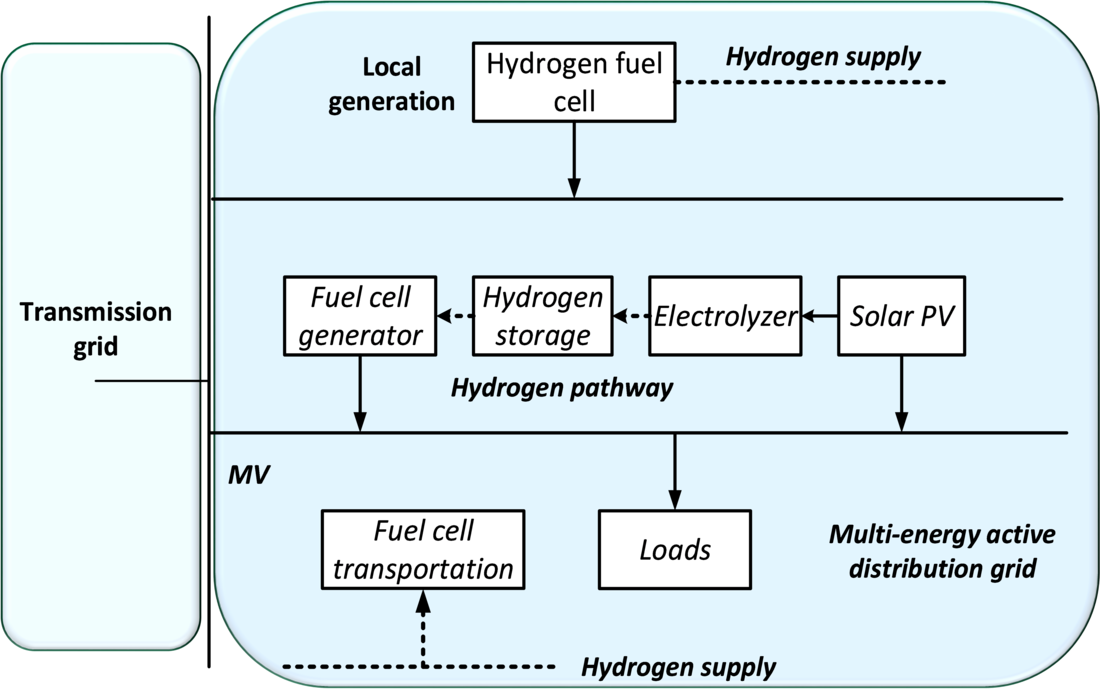
Figure 5 – A possible evolution of active distribution systems – role of hydrogen
Other issues proposed by SC C6 member proposed for future activities will focus on the following challenges in active distribution systems, addressed with the help of other interested Study Committees:
- Climate change and decarbonization approaches, net zero operation of distribution grids.
- Resilience of distribution systems to extreme weather conditions, equipment resilience improvements.
- Forecasting of renewable energy resources (solar, wind) and load, data management and use of AI, use of geospatial location of DER, elements to be integrated into tools for enhancing DER management and the provision of flexibility services.
- Integrating resilience in design of distribution systems for robustness, redundancy and recovery/restoration from black-outs.
- Distribution system planning approaches, taking into account DER as flexibility resources, use of AI for the development of planning and optimization tools, and considering system resilience and reliability.
- Role and impact of ICT and cybersecurity design considerations in improving resilience, use of the concept of digital twin in resilience planning studies and in real-time operation.
SC C6 continues to publish brochures and produce tutorials that focus on knowledge dissemination related to the transition to the future power systems with a high penetration of DER and the potential for decarbonization. The preferential topics of the CIGRE symposia and session in which SC C6 is involved reflect these trends and initiatives. Future Working Group terms of reference and session preferential topics will integrate the topics and considerations proposed above.
Aknowledgments
The SC C6 Chair would like to acknowledge the active participation, contributions and support of all dedicated individuals that contributed to the achievements of SC C6 in this reporting period, including Working Group and joint Working Groups convenors, session special reporters, and SC members, observers and experts. It also wishes to recognize the contributions and support it received from other SCs in developing and promoting the potential of distributed energy resources to implement active distribution systems and provide services to transmission systems.


